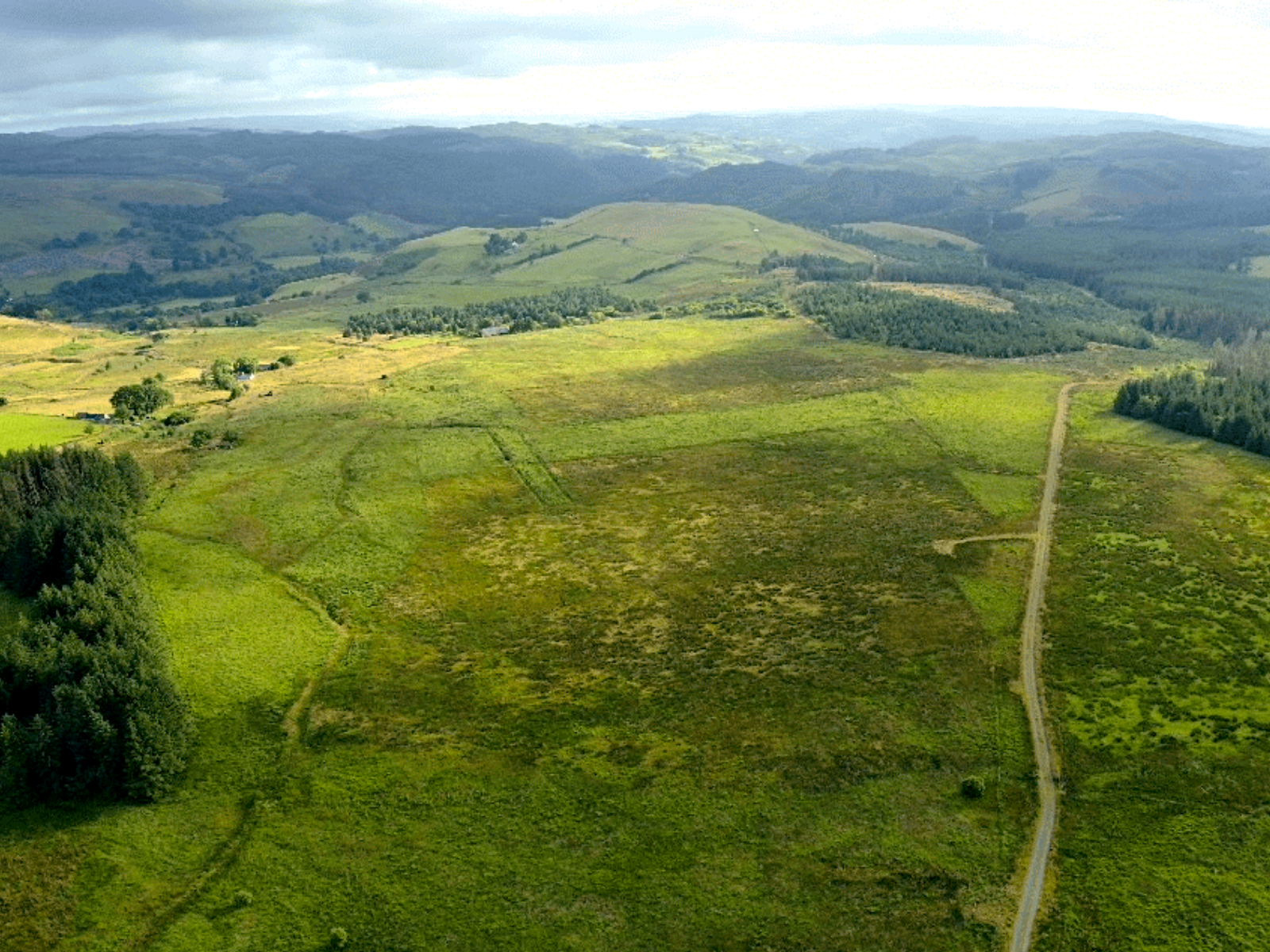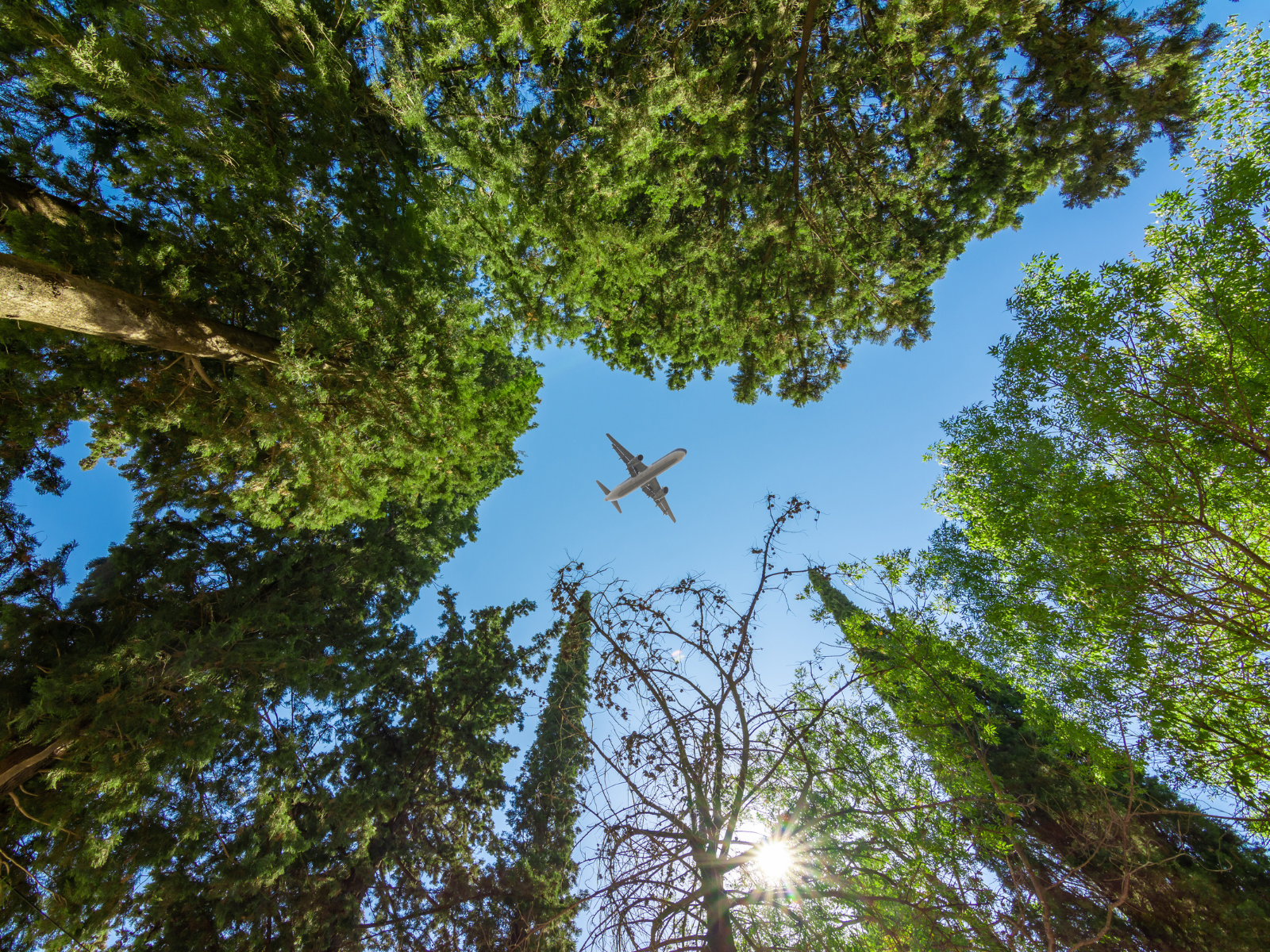Socio-ecological sustainability
To address the global issue of climate change, it is crucial we achieve durable net zero by 2050. This objective is interlinked with addressing many other pressing socio-ecological challenges, such as biodiversity loss, which often stem from common root causes such as land-use change. Climate change exacerbates these stressors, acting as a ‘threat multiplier’ and negatively impacting ecosystems and the communities that depend on them.
Biodiversity is a key determinant of ecosystem health and resilience, providing multiple benefits to society. Despite this, biodiversity is often overlooked in climate change policies. Many current net zero plans that focus only on carbon storage, such as planting monocultures of non-native trees, can impose negative consequences on biodiversity and local people. To avoid this, and instead deliver benefits to ecosystems and society, net zero plans need to be aligned with complementary objectives that protect and enhance the delivery of ecosystem services and are embedded into broader strategies for socio-ecological sustainability.
Nature-based solutions
Nature-based solutions (NbS) are defined as ‘actions to protect, conserve, restore, sustainably use and manage natural or modified terrestrial, freshwater, coastal and marine ecosystems, which address social. economic and environmental challenges effectively and adaptively, while simultaneously providing human well-being, ecosystem services and resilience and biodiversity benefits’ – a multilaterally agreed definition from the United Nations Environment Assembly.
Nature-based solutions for climate mitigation refer to a subset of biological approaches to carbon sequestration and storage that protect the carbon stored in ecosystems, enhance carbon removal, and reduce greenhouse gas emissions (such as nitrous oxide emissions from agricultural soils), whilst conferring additional human well-being and biodiversity benefits. NbS can play an important role in the pathway to net zero, but they must be designed and delivered according to good practice guidance including the IUCN Global Standard and the four NbS guidelines.
Protecting, restoring and sustainably managing healthy ecosystems is also critical to climate change adaptation, increasing the resilience of nature and people to extreme weather events and improving their adaptive capacity. Oxford’s Nature-based Solutions Initiative has compiled a portal of good NbS case studies.
Nature-based Solutions are vital for achieving net zero, but must be implemented alongside rapid reductions in fossil fuel emissions. While it is essential to protect the carbon stored in existing ecosystems and manage land and sea more sustainably to reduce emissions, there are limits to how much additional carbon can be removed through NbS because of the finite land area and competing pressures on land use. Moreover, as climate change worsens, risks to ecosystems increase (eg. forest fires), potentially reducing the climate mitigation potential of some natural systems increasing the risk of carbon losses from ecosystems. Well-designed NbS can play a key role in making ecosystems more resilient to climate change, such as by rewetting peatlands, improving soil health, and protecting the integrity of dense, moist, cool primary forests, but they are not a substitute for cutting fossil fuel emissions. Nevertheless, NbS can play an important role in climate change mitigation, while providing a multitude of co-benefits.
Key facts
WHAT IS NATURE'S ROLE IN REACHING NET ZERO?
Ecosystems naturally act as both sinks and sources of greenhouse gas emissions – they take up CO2 in photosynthesis and can release emissions e.g. if they are cut or burned down. Therefore, it is crucial for reaching net zero emissions that we both minimise emission release and enhance carbon uptake from ecosystems. At the global level, the estimated mitigation potential of NbS if scaled-up, through avoiding carbon sources and enhancing carbon sinks, is roughly 10 gigatonnes CO2 per year (Girardin et al., 2021). This is around 27% of current global annual emissions (37 gigatonnes CO2 in 2018). At regional and national levels, the mitigation potential of NbS on land can vary significantly. In Brazil, for example, nearly 80% of the country’s net-zero GHG emissions pledge could be achieved through NbS, mainly by halting deforestation and restoring native vegetation (Soterroni et al., 2023).
To minimise emission release from ecosystems, action must be taken to keep existing ecosystems and the carbon they hold intact. This means halting nature loss and degradation – for example, by eliminating deforestation from supply chains, and preventing loss and damage to other ecosystems. It also includes management of ecosystems to make them less likely to release emissions, such as by making them more resilient to fire (Wiedinmyer and Hurteau 2010; Russell-Smith et al., 2016). Current rates of habitat destruction and climate change risk pushing us beyond tipping points where forests die back due to fire and drought, releasing CO2 on a large scale (Lenton et al., 2008; Boers et al., 2017; Lovejoy and Nobre 2019).
To enhance carbon uptake by nature, we can restore, manage and create new ecosystems. The best-known NbS of this kind are planting native trees to restore forests, or creating new native mixed species forests on degraded or agricultural land. Whilst forestation has an important role in climate change mitigation, other ecosystems such as grasslands, peatlands, wetlands and marine biomes also have crucial parts to play and are due greater attention (Seddon et al. 2020). It is important to use a variety of types of nature-based solutions to maximise their potential for climate change mitigation, as well as climate change adaptation and other benefits for people and nature. Although the exact climate change mitigation potential of NbS is debated, there is broad agreement that this potential is significant: a recent estimate found that restoring 15% of terrestrial biomes that have been converted to agricultural land could sequester 299 gigatonnes CO2 (30% of total CO2 increase in the atmosphere since pre-industrial times), whilst simultaneously avoiding 60% of expected species extinctions.
Of all the methods of carbon dioxide removal (CDR), NbS are the most ready to be implemented at scale (Field and Mach 2017). It is also of great importance to start upscaling NbS now, to enable them to fulfil their potential for contributing to carbon storage (Qin et al. 2020). This is because it takes time for carbon to be accumulated by ecosystems – trees and other plants that we plant now will continue growing and sequestering carbon for decades to come. Some ecosystems, such as tropical forests, sequester carbon until they reach maturity after several decades, at which point they are often thought to become more or less static stores of carbon (Canadell et al. 2007). However, temperate forests can continue to sequester carbon for centuries (Birdsey et al., 2025) and carbon could continue to accumulate in forest soils, though data is scarce. Other ecosystems, such as peatlands, mangroves and seagrass meadows, continue to sequester carbon year on year, and in the absence of human disturbance will not saturate within the timescales relevant to climate change (Rydin and Jeglum 2006; Inoue 2019; Miyajima and Hamaguchi 2019; Gallego-Sala 2018). Although there is a need for urgency in scaling up NbS, quality must not be compromised, since this could lead to the creation of unstable carbon stores, and detrimental effects on biodiversity and people. To ensure high integrity, NbS must adhere to best practice including the NbS Guidelines and the IUCN Global Standard. For example, they should deliver genuine benefits for biodiversity and be co-designed and delivered in partnership with local communities and Indigenous Peoples (Seddon et al., 2021).
HOW PERMANENT ARE NATURAL CARBON STORES?
Natural carbon stores can last for millennia if properly protected and managed, and if not compromised by adverse climatic conditions (Rydin and Jeglum 2006). For example, carbon stored in forests, wetlands and grasslands risks being released back into the atmosphere due to fires in years to come. Although some dry forests and grasslands are fire-adapted and need fire to maintain the health of the ecosystem (Binkley et al., 2007, Baker and Hansen 2024), the rising frequency and severity of wildfires driven by climate change is increasing the risk of carbon release from fire (Stephens et al. 2013). Managing vulnerable ecosystems to reduce fire risk, such as by rewetting peatlands and reducing forest degradation, can help mitigate the risk of carbon release, along with efficient fire response strategies. Moreover, socio-economic and political factors are at play which may increase or decrease the risk of reversal for carbon stored in ecosystems. Good governance, including local buy-in, equitable participation at all stages of decision-making, and effective legislation, is necessary to secure the permanence of natural carbon stores.
However, as climate change progresses, the resilience of natural carbon stores will decrease (Mitchard 2018). Therefore, it is of critical importance that global-scale implementation of NbS occurs alongside deep and rapid cuts in fossil fuel emissions. If global warming exceeds 2°C above pre-industrial levels, then the ability of natural ecosystems to store carbon will be severely compromised, leading to large-scale CO2 release and acceleration of climate change. Hence rapid action must be taken across all sectors to cut emissions, and ensure that temperatures peak this century, at or below 2°C (Seddon, 2022; Anderson et al. 2019). Large-scale implementation of NbS makes an indispensable contribution to this goal; if, for example, we peak at 2°C warming around 2075, then this NbS will mitigate 0.3°C of warming (Girardin et al., 2021).
To summarise:
- NbS can provide carbon storage for millennia, but there is a risk of carbon being released.
- The risk of carbon release can be decreased by good management and governance, and rapid emission cuts across all sectors.
- In spite of the risk of carbon release, NbS make an indispensable contribution to reaching net zero emissions, and failure to implement them at scale would lead to worse climate change.
HOW CAN THE SUCCESS OF NBS PROJECTS BE ENSURED?
To ensure that NbS are efficient at taking up and storing carbon for the long term, they must be carefully designed to each specific context, informed by the best possible science and local and indigenous knowledge. This is also needed to ensure that NbS do not have negative social, ecological and biophysical side effects. Poorly implemented nature-based interventions have in the past led to land grabs, human rights abuses, biodiversity loss and water shortages (Lyons and Westboy 2014; Buck 2016; Brancalion and Chazdon 2017; Chausson et al. 2020); these do not meet the criteria to be classed as NbS, which must deliver benefits for biodiversity and people However, well-planned NbS can act as a positive force for nature and local people, whilst also mitigating climate change (Seddon et al. 2020).
The following four simple principles can guide NbS projects to ensure they are both successful and sustainable:
- NbS are not a substitute for rapid cuts in fossil fuel emissions.
- All marine and terrestrial ecosystems are important for NbS.
- Indigenous Peoples and local communities must be the main stewards and beneficiaries of NbS.
- NbS must support biodiversity and ecosystem health.
Read more about these principles here, which were originally outlined in a letter to the COP26 president.
In addition, the International Union for the Conservation of Nature (IUCN) has published a Global Standard for NbS, which provides more detailed guidance on how to implement NbS with integrity. The Nature-based Solutions Initiative at Oxford has created a portal showcasing best-practice examples of effective NbS projects.
SHOULD NBS BE USED FOR CARBON OFFSETS?
As NbS sequester carbon, there is a high level of interest in using them to ‘offset’ emissions produced by other means. Although offsetting is a legitimate method for funding NbS, and it can play an important role on the path to net zero emissions, it can be associated with a number of problems that must be addressed:
-
- Offsetting has been used as an excuse for not cutting emissions, allowing environmentally destructive activities to continue under the green veil of NbS or other offset types. Therefore, offsetting (by NbS or other means) must only be used by companies that have rigorous emission reduction strategies.
- Nature-based offsetting projects have sometimes led to land grabs, human rights abuses, and other negative consequences for local people. Therefore, offsets must only fund high-integrity NbS that have socially-just governance structures, and a sufficient level of engagement with local communities, in line with the IUCN Global Standard for NbS.
- Some projects labelled as NbS have had detrimental ecological side effects. For instance, establishing monocultures of fast-growing water-hungry non-native tree species in non-forest ecosystems can compromise water supply, destroy important grassland ecosystems and the species that depend on them, and negatively affect local livelihoods. Therefore, offsets must only fund NbS that are explicitly designed to support or enhance local biodiversity and have undergone full ecological assessments.
- Offsetting has sometimes funded creation of ecosystems with low resilience to environmental change and hence unstable carbon stores. Therefore, offsets must only fund NbS that have been designed to be ecologically resilient to climate change and other threats such as pests and disease; this includes, for example, planting mixtures of carefully chosen, stress-tolerant tree species adapted to local conditions, rather than just one fast-growing species.
For further guidance on using NbS as offsets as part of a genuine net emission reduction strategy, see the Oxford Principles for Net Zero Aligned Carbon Offsetting, and to ensure the NbS funded have social and ecological integrity, follow the IUCN Global Standard for NbS.
examples
FORESTS
The current carbon stock in the world’s forests is around 860 gigatonnes of carbon (Pan et al. 2011). From 2001–2019 there was a 9.7% decrease in global tree cover, releasing 105 gigatonnes of CO2 (equivalent to 29 gigatonnes of carbon) (Global Forest Watch 2020). The Amazon rainforest alone stores an estimated 250–300 gigatonnes tonnes of carbon, equivalent to 15–20 years of global greenhouse gas emissions (2024 Living Planet Report, WWF). Around 14–17% of the Amazon rainforest has already been deforested, nearing the tipping point of 20–25% destruction, beyond which both significant local and global consequences are expected.
It is critical to end deforestation and keep carbon locked up in forests rather than letting it enter the atmosphere. This means, for example, eliminating deforestation from commodity supply chains, which includes displacement of deforestation elsewhere, e.g. if one crop displaces another, the demand for which is then met by deforestation (Lambin et al. 2018). Intact forests also continue to sequester carbon – forests globally together currently do this at a rate of about 1.1 gigatonnes of carbon per year (Pan et al. 2011), although some studies indicate that this carbon sink is gradually saturating (Hubau 2020), others demonstrate that mature and old-growth forests in temperate regions can continue to sequester carbon for many centuries, if protected from degradation (Birdsey et al., 2023, 2025).
Restoring forests, improving management of existing forests, and growing trees on degraded or unproductive agricultural land, also has great potential as a carbon sink. As trees and other forest plants grow, they absorb CO2 from the atmosphere and store it in living plants, dead organic matter and soils. Regrowing natural forest can sequester carbon at an estimated rate of 3.16–3.58 megatonnes of carbon per hectare per year (Cook-Patton et al., 2020; Griscom et al., 2017). However, forests are not the only carbon-rich ecosystem, and we must restore more ecosystems than just forests if we are to achieve the maximum climate change mitigation and biodiversity benefits (Strassburg et al., 2020).
Protecting and restoring forests is also of great value for adapting to climate change, such as by increasing water quality and availability, reducing flooding, preventing landslides and providing food for times of shortage (Chausson et al., 2020). Forest stewardship also supports people’s livelihoods – 86 million green jobs are currently provided by forests, and 90% of people living in extreme poverty are dependent on forests for part or all of their livelihoods (FAO 2020). Furthermore, forests are vital havens of biodiversity – collectively, they are estimated to be home to about 80% of plant and animal species on land (FAO 2020), with tropical forests supporting around two-thirds of land species, despite covering under 10% of Earth’s land surface (Giam 2017). However, it is vital to follow the ‘ten golden rules’ of forest restoration to deliver multiple benefits and avoid trade-offs (Di Sacco et al., 2021).
An example of forest-based NbS providing multiple beneficial outcomes is coffee farm and forest restoration, combined with creation of drainage ditches, in El Salvador, to reduce flood risk and provide additional income for local people from fruit trees. In Burkina Faso, construction of fences to exclude livestock from sections of degraded land allowed trees to regrow, providing products such as livestock fodder and wood for local landowners to use or sell, whilst also increasing carbon sequestration and tree species diversity. An example in a contrasting context is natural regeneration of woodland in the Lake District, UK, to reduce erosion and increase water quality, hence decreasing water treatment costs, whilst also boosting biodiversity.
PEATLANDS
Peatlands are highly efficient carbon stores, because anoxic conditions prevent decomposition of organic matter, meaning carbon can be locked up for millennia. Peatlands cover 3% of the Earth’s land surface, but account for 21% of global soil organic carbon (Leifeld and Menichetti 2018). Therefore, protecting these existing stores, which can continue to sequester carbon in perpetuity, is critical (Rydin and Jeglum 2006). In addition, 10% of peatlands are degraded due to draining or mining, converting them into sources of carbon. Restoring degraded peatlands by rewetting can turn these sources into sinks, providing a highly cost-effective climate change mitigation strategy, whilst also benefiting biodiversity. In some cases it is also possible to continue to provide income through paludiculture (cultivation of certain water-tolerant crops on rewetted peatlands).
Some examples of peatland restoration on a large scale are in Belarus, where 50,000 ha of degraded peatland were rewetted over a decade, and in Scotland where 25,000 ha have been under restoration since 2012, with a £250 million commitment to expand restoration in Scotland over the next decade.
COASTAL & MARINE
Many coastal and marine habitats, including saltmarshes, mangroves and seagrass meadows, are rich in carbon and have high rates of carbon sequestration; indeed on average they store carbon more rapidly per unit area, and more reliably for longer periods of time, than terrestrial forests (McLeod et al. 2011). For example, mangrove forests sequester carbon 2-4x faster than mature tropical forests. About 67% of mangrove, 35% of saltmarshes and 29% of seagrass meadows have already been lost globally, so protecting these carbon stores is critical (Blue Carbon Initiative 2020). In addition, restoration of coastal and marine ecosystems can sequester large quantities of carbon (Herrera-Silveira et al. 2020; Himes-Cornell et al. 2018). Protecting and restoring coastal habitats is also of great importance for protecting coastlines from flooding and erosion, and providing biodiverse habitats to support fisheries.
An example of coastal NbS providing multiple benefits is a mangrove protection project in India which protects villages and crops from flooding from cyclones, whilst also improving soil fertility and providing nursery grounds for fish. Another is the creation of saltmarsh on the seaward side of dikes in the Netherlands; the marsh reduces wave energy before it hits the dike, which was shown to be more effective than heightening the dike itself for reducing chance of inundation. Coastal NbS can also protect hard infrastructure such as dikes and seawalls from wave damage; this reduces maintenance costs and means that smaller and cheaper structures can be built, such as at Medmerry in the UK.
AGRICULTURE
Agricultural management utilising ecological concepts and components of natural ecosystems can increase carbon sequestration aboveground and in soils. For example, agroforestry – integration of trees into farmland – enhances carbon sequestration rates of croplands or pasturelands, whilst boosting biodiversity (Nair et al. 2009). Agroforestry is also often more profitable than intensive plantations, due to lower costs of management and higher market prices for products (Jezeer et al., 2017), and can be especially beneficial in marginal regions where trees can help to improve climate resilience (Lasco et al., 2014).
Other forms of nature-based agriculture that increase carbon sequestration include addition of organic material to soil, reduced tillage and diversification of crop and non-crop species on farmland; these have the additional benefits of enhancing pest control and pollination, and improving soil fertility and nutrient cycling. Evidence is growing that agricultural practices that embrace biodiversity, on average, increase or maintain crop yields (Tamburini et al. 2020).
Nature-based farming has even been shown to decrease the vulnerability of farmers to the effects of the COVID-19 pandemic. In Guatemala, planting multiple crops amongst each other, sharing seed banks to increase genetic variety, coordination of farming at the community level, and payments for forest management from the government, gave these communities insurance, food and savings. This increased their ability to cope when transport was restricted due to the pandemic.
URBAN
Restoring and creating natural habitats within cities has great potential for improving the quality of life of city-dwellers, whilst also contributing to carbon sequestration. Urban NbS are diverse in form, including green roofs and green walls, created wetlands, sustainable drainage systems, urban agriculture, street trees and parks – collectively these are often known as urban green and blue infrastructure. They can greatly reduce surface water runoff and flooding, whilst improving air and water quality and helping to cool cities (Keeler et al., 2019). The climate change mitigation potential of urban NbS is substantial (De la Sota et al., 2019), and due to the extensive additional benefits to society, strategically increasing greenery in towns and cities is considered a priority (McPhearson 2020). Urban NbS have the potential to benefit many people directly: in 2020, around 4.4 billion people – 56% of the global population – lived in cities, with this expected to increase to 6 billion by 2040 (IIED 2020).
Some examples of successfully implemented urban NbS are urban trees in Wisconsin, USA, cooling the city of Madison; green roofs, rain gardens and stormwater ponds reducing flooding and nutrient runoff in the US Mid-Atlantic region; urban forests counteracting the heat island effect and air pollution in Lahore, Pakistan; and Knowledge Mile Park, in the Netherlands, which incorporates green roofs, green walls and vegetated areas to improve drainage, reduce air pollution and grow food, as well as providing sites for university-level education, and bring diverse members of the local community together to collaborate on the project.
Research summary
Our research focuses on better understanding the synergies and trade-offs between net zero and nature conservation, including the role of nature-based solutions and how to get them right.
We are working closely with the Nature-based Solutions Initiative to develop guidance on the use of NbS within net zero strategies, in order to ensure their social and ecological integrity.
One flagship project is developing and deploying economic land use modelling to understand the synergies and trade-offs between net zero policies and biodiversity conservation, including the role of Nature-based Solutions, in climate mitigation efforts, with a particular focus on Brazil.
Recent publications
- Soterroni, A et al. (2023) Nature-based solutions are critical for putting Brazil on track towards net-zero emissions by 2050. Global Change Biology. 29, 7085-7101
- Soterroni, A et al. (2022) Nature-based solutions are key for meeting Brazil’s climate goals and supporting the economy
- Fankhauser, S., Smith, S.M., Allen, M. et al. (2022). The meaning of net zero and how to get it right. Nat. Clim. Chang. 12, 15–21
- Seddon, N. (2022). Harnessing the potential of nature-based solutions for mitigating and adapting to climate change. Science. 376, 1410-1416
- Turner, B., Devisscher, T., Chabaneix, N., Woroniecki, S., Messier, C., & Seddon, N. (2022). The role of nature-based solutions in supporting social-ecological resilience for climate change adaptation. Annual Review of Environment and Resources, 47(1), 123–148
- Girardin, C. A., Jenkins, S., Seddon, N., Allen, M., Lewis, S. L., Wheeler, C. E., Griscom, B. W., & Malhi, Y. (2021). Nature-based solutions can help cool the planet — if we act now. Nature, 593(7858), 191–194
- Seddon, N., Smith, A., Smith, P., Key, I., Chausson, A., Girardin, C., House, J., Srivastava, S., Turner, B. (2021). Getting the message right on nature-based solutions. Global Change Biology. 27, 1518-1546.
- Liu, Q., Guo, Z., Gao, L., Dong, Y., Moallemi, E. A., Eker, S., Yang, J., Li, X., Obersteiner, M., & Bryan, B. A. (2021). A Review of Model-Based Scenario Analysis of Poverty for Informing Sustainability. Environmental Science & Policy, 137, 336-348
- Seddon, N. (2021). Guidelines for Successful, Sustainable Nature-based Solutions. Kleinman Center for Energy Policy.
OTHER RESEARCH THEMES
News and Events

Oxford Net Zero: The story so far
Oxford Net Zero is excited to share a new summary of its work. Oxford Net Zero: The story so far gives a representative look at our work over the life of the programme since its inception, organised around three key areas: An integrated ... Read more

UK Government Voluntary Carbon and Nature Markets policy consolidates action on nature and climate, but risks compromising urgent mitigation of climate change and preventing and repairing nature loss, say ONZ researchers
Oxford, 23 June 2025 Researchers from the Leverhulme Centre for Nature Recovery, Oxford Net Zero and Oxford Sustainable Finance Group have submitted feedback to the UK Government’s ‘Voluntary Carbon and Nature Markets: Raising Integrity’ ... Read more

Job opening: Serviced Emissions Research & Engagement Manager
The Oxford Net Zero Engagement Team is recruiting for a Serviced Emissions Research & Engagement Manager. This pivotal role will lead a high-impact initiative focused on advancing the understanding and integration of “serviced emissions” ... Read more

New Oxford Report: Carbon Capture and Storage Without Taxpayer Billions Is Possible
Oxford Net Zero and Carbon Balance researchers reveal the risks of the current UK CCS policy mix and explore how a carbon storage mandate on fossil fuel producers could help the UK meet its climate targets while protecting public finances A ... Read more

Oxford Net Zero partners with AXA XL on research in India, Mexico and Kenya
Oxford Net Zero is excited to announce that it is working with the insurance company AXA XL, the Institute for Science, Innovation and Society (InSIS), and the Smith School of Enterprise and the Environment to conduct research on private sector ... Read more

Finance, Fossil Fuels and $10 coffee: Reflections on COP29
As we begin a new year, Oxford Net Zero looks back on the highs and lows of November's climate summit in Baku. In some ways, this COP was different. The venue was smaller than in previous years, which meant that attendees could have genuine ... Read more



